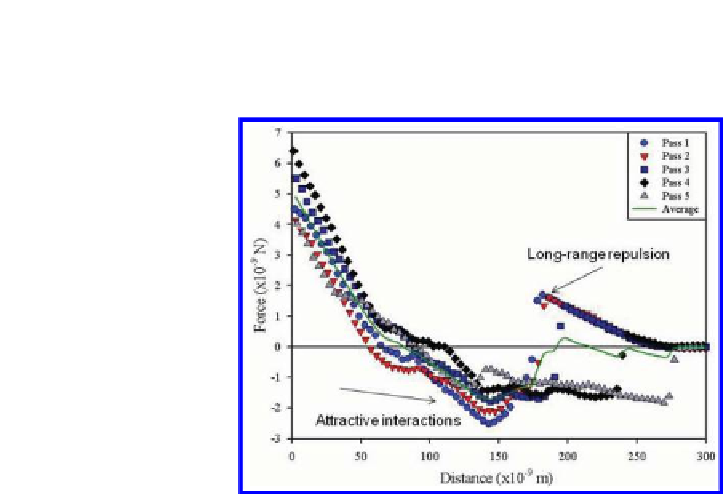Biology Reference
In-Depth Information
perhaps because steric and electrostatic repulsive forces were counteracting
the hydrogen bonding.
Figure 13.4. The cell probe shown in
Fig. 13.3
was contacted with a well-developed
bioilm of
P. aeruginosa
. The igure shows representative data from ive approach
cycles (labelled as pass 1 through pass 5), and the average of those ive measurements.
More information about this system is available elsewhere (Ref. 49).
Another study of cell-cell interactions for marine bacteria showed long-
range repulsion in the approach curves but did not show the presence of
any attractive forces in the approach curves.
50
In this case, the authors used
a cell probe to study the interaction of
with a
bioilm of the same bacteria, and a similar experiment was performed with a
Pseudomonas
Desulfovibrio desulfuricans
sp. It was interesting to note that the retraction proiles did not
show any attraction between the two biological samples, because this seems
to be unusual in AFM experiments with bacteria. The authors speculated that
electrostatic repulsion was responsible for mitigating any effects of polymer
adhesion, which are usually present when bacteria are probed with AFM.
13.5 FUTURE APPLICATIONS AND RESEARCH NEEDS
The use of AFM to study bacterial adhesion is now a widely accepted and
commonly used technique. Biological applications in general are now much
easier to study since it has become easier to work with AFM in liquids,
the spring constant of the probe can be measured more accurately using
simple methods, quantitative models are now available to help interpret
biological data and many studies have been published describing how to















Search WWH ::

Custom Search